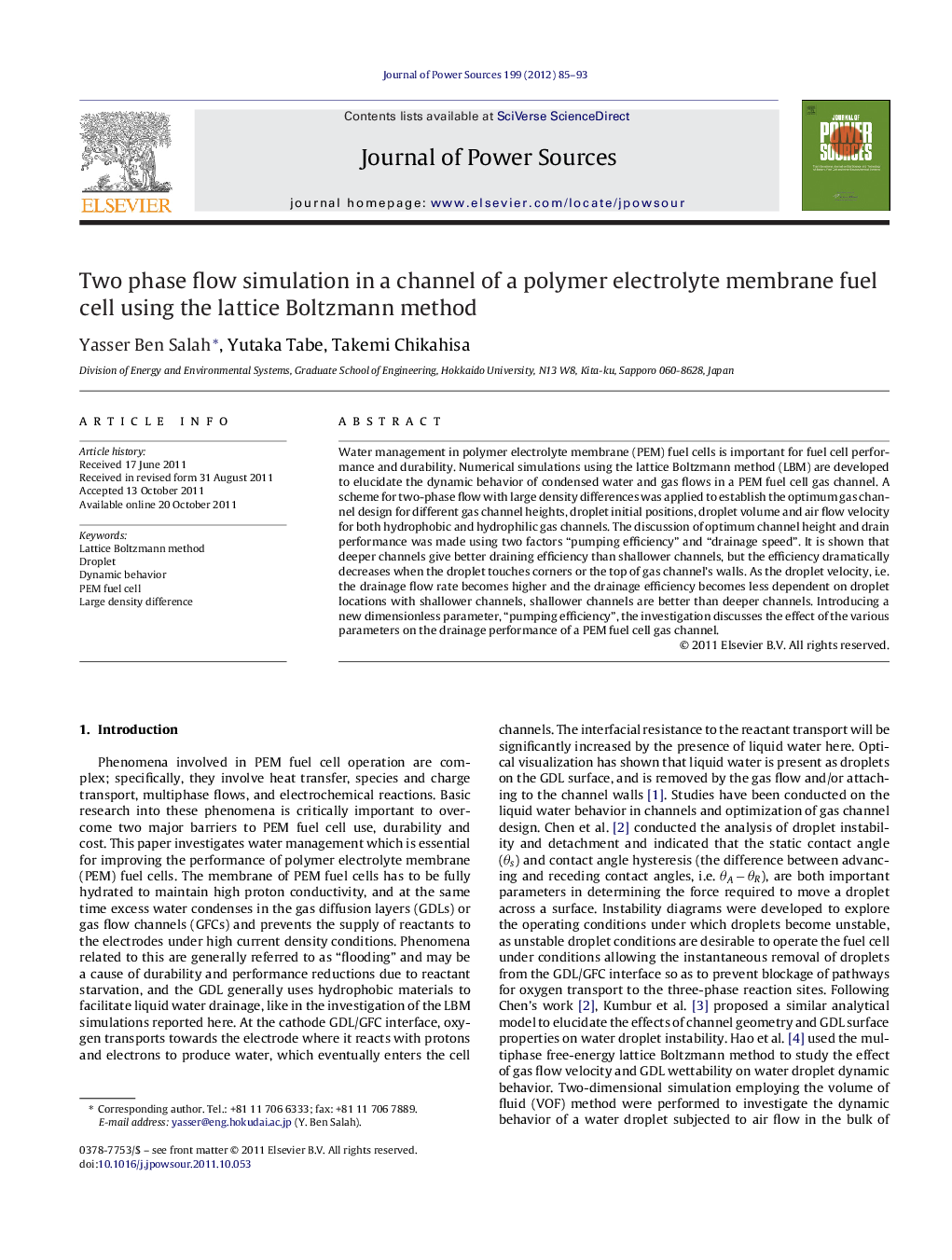| Article ID | Journal | Published Year | Pages | File Type |
|---|---|---|---|---|
| 1284594 | Journal of Power Sources | 2012 | 9 Pages |
Water management in polymer electrolyte membrane (PEM) fuel cells is important for fuel cell performance and durability. Numerical simulations using the lattice Boltzmann method (LBM) are developed to elucidate the dynamic behavior of condensed water and gas flows in a PEM fuel cell gas channel. A scheme for two-phase flow with large density differences was applied to establish the optimum gas channel design for different gas channel heights, droplet initial positions, droplet volume and air flow velocity for both hydrophobic and hydrophilic gas channels. The discussion of optimum channel height and drain performance was made using two factors “pumping efficiency” and “drainage speed”. It is shown that deeper channels give better draining efficiency than shallower channels, but the efficiency dramatically decreases when the droplet touches corners or the top of gas channel's walls. As the droplet velocity, i.e. the drainage flow rate becomes higher and the drainage efficiency becomes less dependent on droplet locations with shallower channels, shallower channels are better than deeper channels. Introducing a new dimensionless parameter, “pumping efficiency”, the investigation discusses the effect of the various parameters on the drainage performance of a PEM fuel cell gas channel.
► LBM for two-phase flow with large density differences is developed. ► Liquid water droplet behavior in a PEM fuel cell gas channel was investigated. ► The optimum PEM fuel cell gas channel design was established for better draining. ► Draining efficiency depends on channel height, droplet position and wall wettability. ► Simulations showed the optimum channel height to be 0.5 mm for this study conditions.
